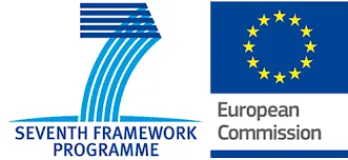EDEFU
Relevant project information
Dates
Project website
Role of CIRCE
Grant agreement number
Funded by

Description and objectives
In order to improve the energy efficiency of industrial furnaces, this project creates and implements a methodology for the study, design and construction of multi-sector furnaces (ceramics, cement, glass and non-ferrous metals, mainly aluminum) that should lead to a 20% improvement in energy efficiency.
To this end, hybrid heating systems are being studied, based on the combination of novel (plasma, microwave and others) and conventional (combustion, electricity, induction) systems.
New insulation designs are also studied, based on new refractory materials with improved thermal properties, and finally, waste and energy recovery systems to optimize efficiency and recover waste and material residues.
The methodology includes traditional engineering studies and calculations and advanced numerical modeling, as well as two experimental facilities: a semi-industrial scale aluminum melting demonstration furnace and a small-scale glass production pilot.
The developments will be integrated and guided by thermo-economic analysis and optimization of the furnaces and life cycle analysis of their manufacturing, maintenance and operation, and finally the results will be validated according to the criteria set by the industrial partners of the project.
Value proposition
The overall objective of the project is to improve energy efficiency in energy intensive industries and reduce the environmental impact.
This project focuses on industrial furnaces of various types, creating and implementing a methodology of study, design and construction that can be applied in a multi-sectoral way.
Developments and advances should lead to a 20% reduction in energy consumption compared to current systems, in addition to meeting industrial demands and reducing the emission of pollutants.
CIRCE's work in the project focuses on the one hand on the modeling and simulation of aluminum furnaces, both the small size demonstrator and the extrapolation to full industrial size.
This includes physical modeling and numerical rendering of the differential equations of transport, mass, momentum, chemical species and energy in fluids, solids and molten parts, using and developing suitable approximations for complex phenomena such as turbulence, chemical reactions, thermal radiation and special heating media.
On the other hand, CIRCE is the leader of the horizontal tasks of thermo-economic and life cycle analysis, which will be applied to all types of furnaces, especially aluminum, glass and cement.
Project partners
CIRCE


